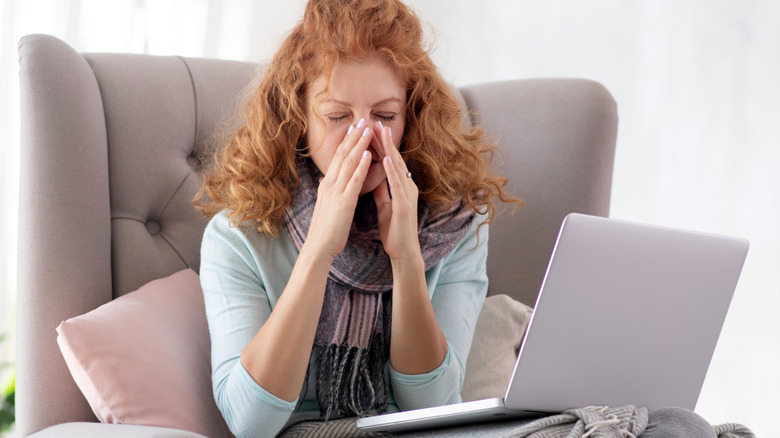The Real Reason Your Nose Feels So Cold
When the winter season is upon us, we know it's time to bundle up. No one likes venturing out into the cold in the wee hours of the morning to defrost their car or retrieve the mail — but sometimes, we simply have no choice. Despite our best layering efforts, why is it that our extremities seem to be the most prone to getting the chills? More specifically, why is our nose often the first to get so cold?
According to Medical News Today, our nose is mainly comprised of cartilage. For this reason, it doesn't offer us much in the way of insulation. When we experience a drop in temperature, the body goes to work prioritizing blood flow to our most essential organs such as the brain and heart in order to conserve heat. As a result, blood flow is directed away from areas such as our ears, feet, and nose, leaving these extremities feeling colder than they normally would.
Aside from frigid weather, however, science indicates there may be some other unique sources of a cold nose.
A cold nose may be related to more than just the weather
Interestingly, a study conducted by the University of Nottingham found that the temperature of our nose can be influenced by our level of mental overwhelm. Using a thermal camera, researchers saw that when participants were concentrated on challenging mental tasks, they experienced a change in breathing patterns. The study also led researchers to believe there may be a link between blood flow and mentally taxing work, as blood flow may get directed away from the nose and rerouted to the brain during this period of concentration. Researchers believe further insight could be gained through additional research on the subject.
A consistently cold nose could also be attributed to certain health conditions such as hypothyroidism or blood circulation issues (via Medical News Today). Be sure to consult with your physician to rule out any potential underlying conditions. However, if you find you only get a chilly nose in cold or snowy weather, Healthline suggests keeping your face warm through the use of a mildly warm compress, drinking a hot beverage, or wearing a face covering such as a thick scarf.
In the event of frostbite, you'll want to seek prompt medical attention, so be aware of potential warning signs such as numbness, pain, tingling, or skin on the nose that has turned yellow, red, white, gray, or black in color.


